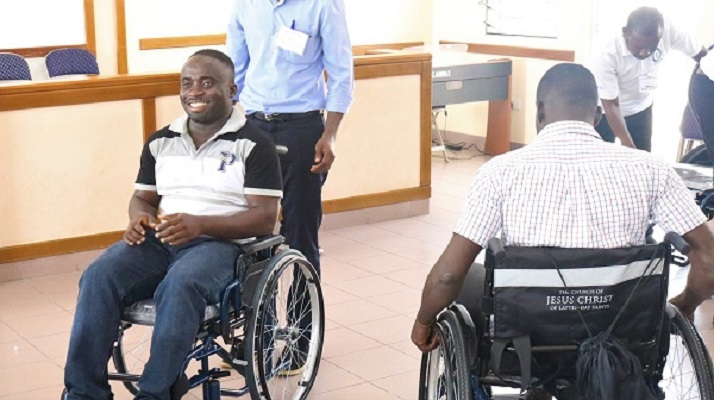Tairou Maman Askandarou Writes: Good and bad wheelchair for the physically challenged
When walking becomes difficult or impossible in one’s life due to illness, injury, problems related to old age, or various forms of physical disability, a wheelchair is needed for mobility.
The conditions of living that are in need of a wheelchair for mobility include but not limited to spinal cord injuries (paraplegia, hemiplegia, and quadriplegia), cerebral palsy, brain injury, osteogenesis imperfecta, motor neuron disease, multiple sclerosis, muscular dystrophy, and spina bifida.
Each of these conditions comes with its unique sets of needs when it comes to mobility. The conditions must be assessed differently, and concerned individuals need unique types of wheelchairs suitable for their unique conditions and existing abilities.
This article will focus on two major categories of the physically challenged group of the disability community: The Paraplegic (paralyzed from the waist down) and the Quadriplegic (paralyzed from neck or chest down). These groups have and/or develop a level of physical ability over time, especially in cases where the paralyzed condition is a result of an injury.
Paralysis caused by an injury to the Spinal Cord, popularly known as Spinal Cord Injury (SCI) can be classified as a Complete Condition (very little to no recovery chances) or Incomplete Condition (some level to complete recovery chances). In both cases, a large number of the victims have enough strength in their upper body to be able to achieve some level of independence using the right medical aids, such as a wheelchair.
The ability to achieve tasks at home by self is the greatest wish and achievement for every wheelchair user. The tasks range from getting in and out of the bed to taking care of washroom needs. In order to achieve these tasks, one needs a wheelchair suitable for his/her paralysed condition.
For those with enough strength in their upper body with the ability to use their arms, they need a wheelchair with removal armrests to be able to transfer to and from their chair by themselves. For beginners in the transfer task, the height of the chair must match the height of the bed or anything they are transferring on to. This will facilitate an easy and successful transfer by lifting and sliding oneself using the arms.
Here’s a video of an Incomplete Quadriplegic demonstrating how to do transfers using a wheelchair with removable armrests:
The physically challenged category of the disability community in Ghana lacks guidance in selecting wheelchairs, especially for the newly paralysed. Elsewhere in the world, the services of an Occupational Therapist are required to assess the condition of the disabled and the right wheelchair will be selected accordingly. The injured are mostly left to his or her family to decide on what wheelchair to pick for them. Many find themselves in wheelchairs with abilities to achieve tasks such as transfers, but they are stuck due to being in an inappropriate wheelchair.
Many wheelchair users are it from birth after injury or old age can achieve a level of independence by doing tasks themselves at home and outdoors. Adequate wheelchair for each paralysed condition is key to achieving this independence, among other needed medical aids and home set-ups.
Consult an Occupational Therapist and/or speak to peers in the disability community for guidance in picking a wheelchair for your loved ones and the general public during donation efforts.
The writer, Tairou Maman Askandarou, is the Founder and Peer Mentor at Spinal Cord Injury Awareness and Support Initiative.




Nice article,this will enlighten people on which wheelchair they get when they find themselves in any such condition.Thank you